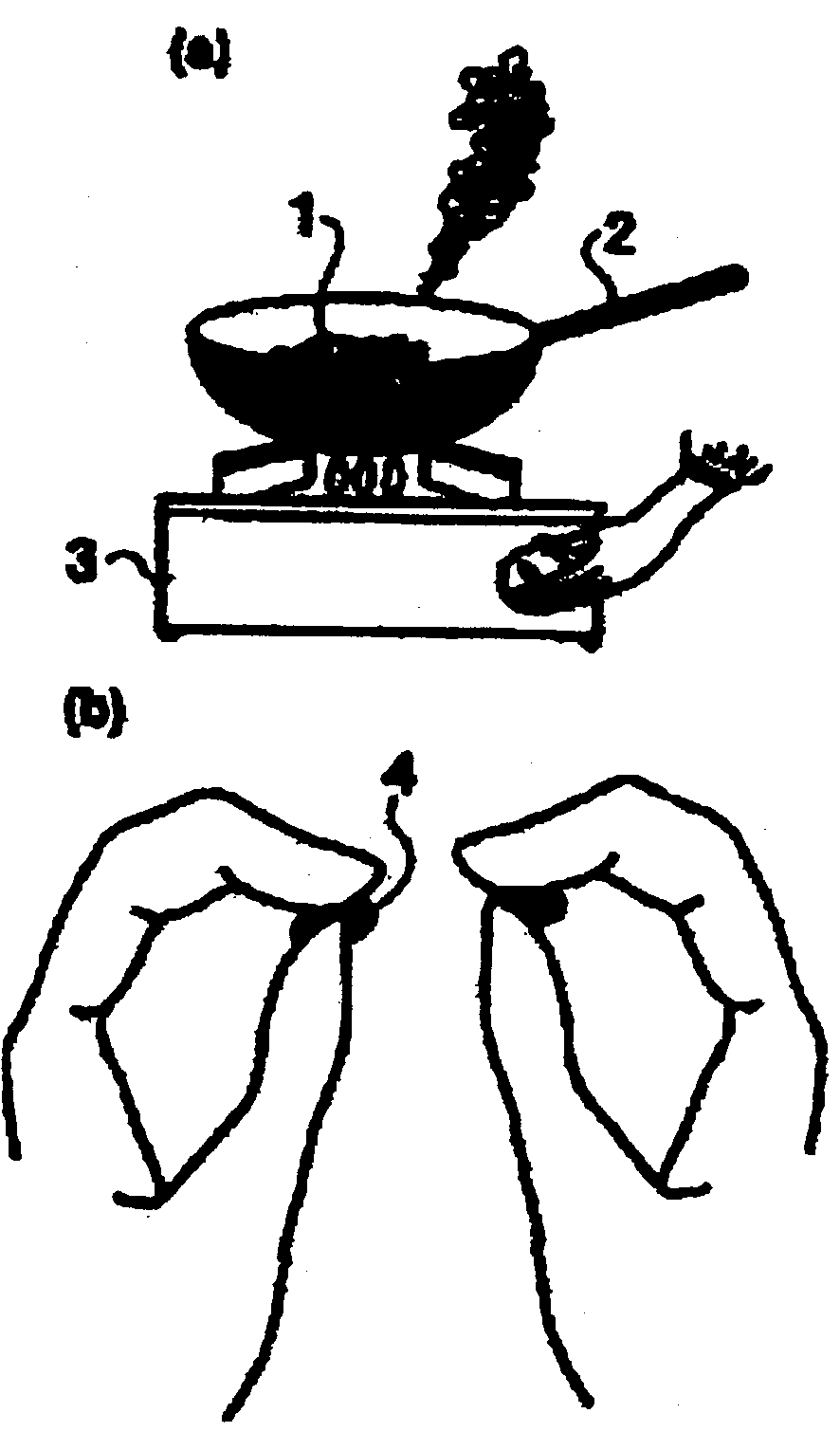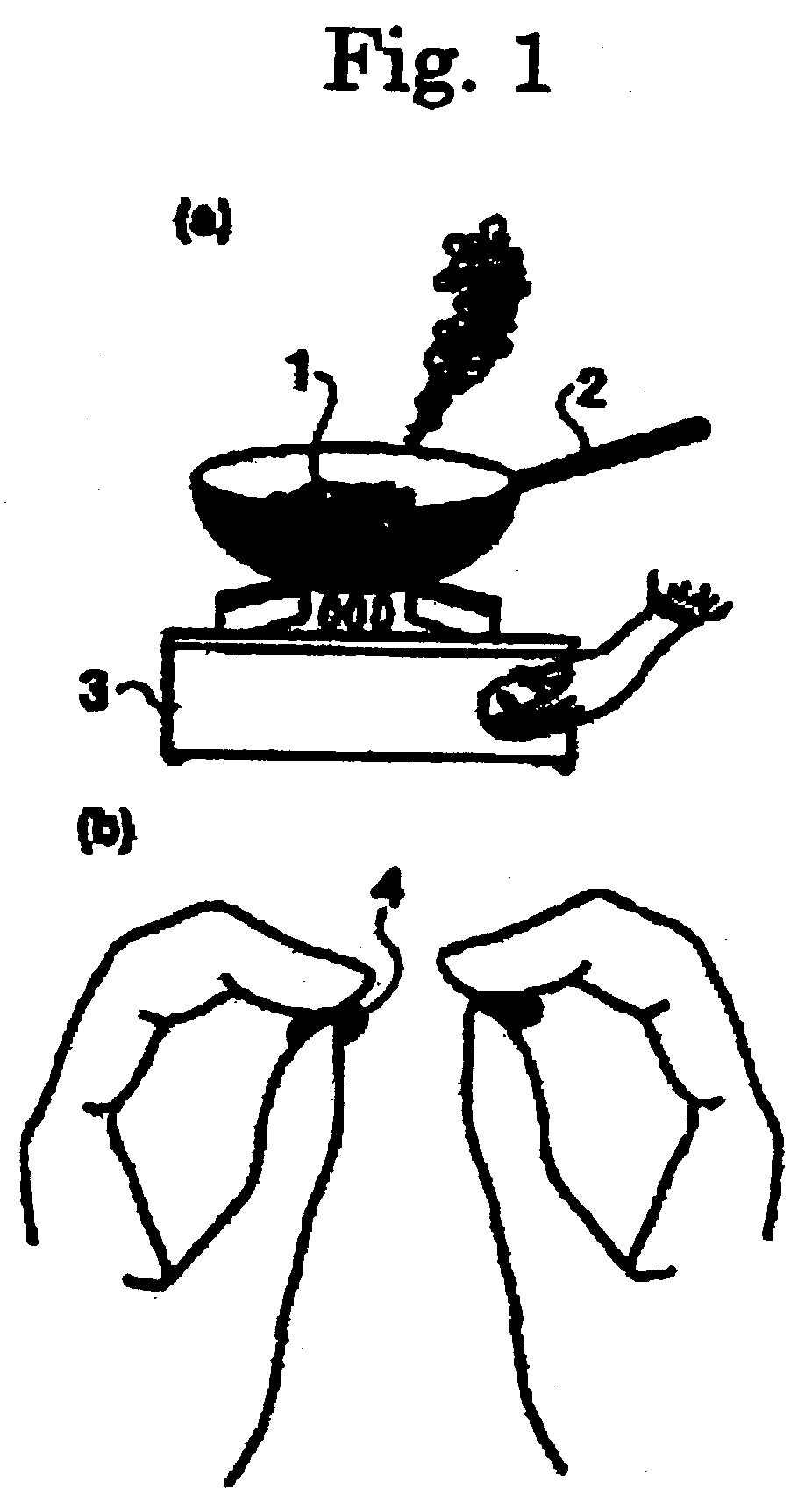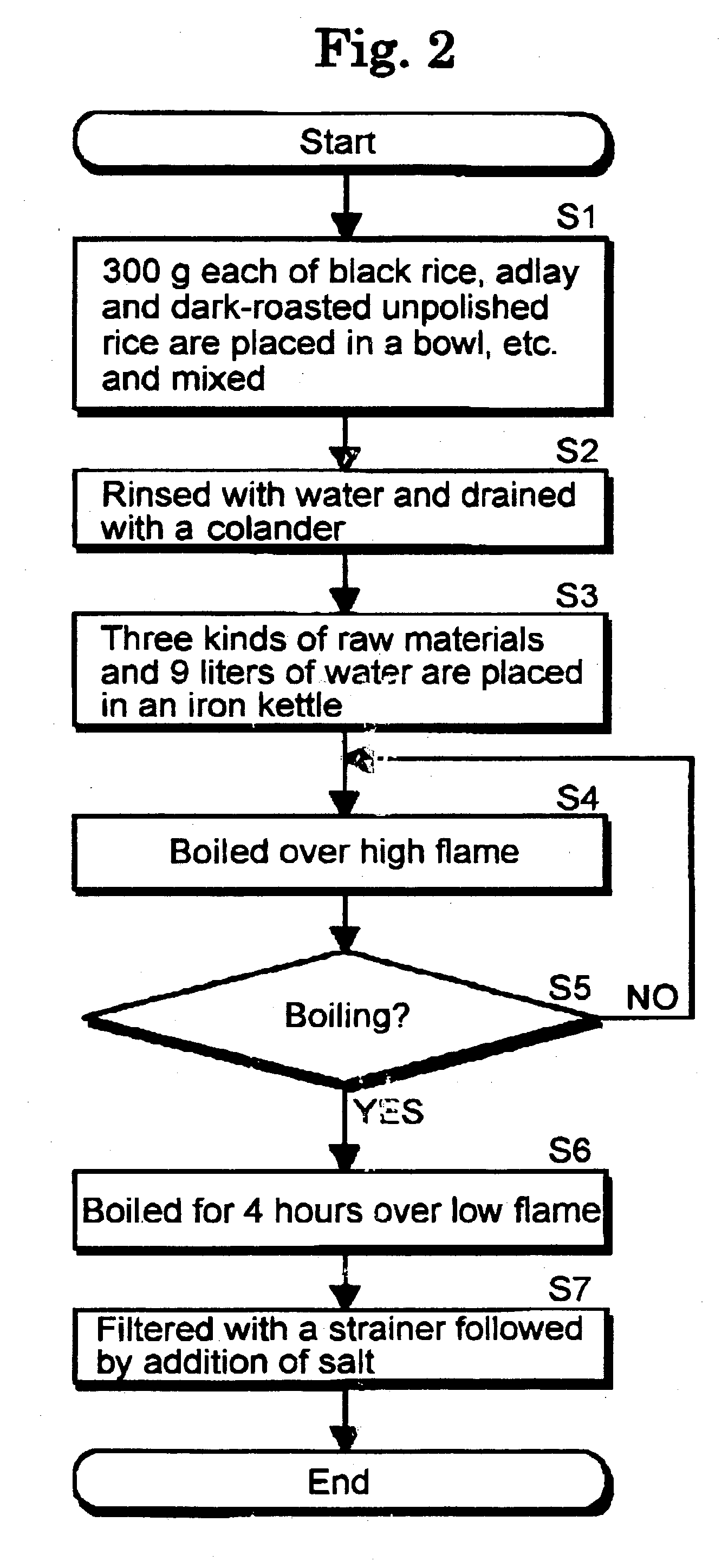[0007]In order to solve the above problems, an object of the present invention is to provide a watery rice gruel and its production method which, together with being able to maintain a patient's appetite and other desires by stimulating the patient's
hypothalamus so that even patients such as
terminal cancer patients who have experienced an extreme loss of appetite are able to eat enables the
homeostasis system of the patient's body to function normally. In addition, an object of the present invention is to provide a watery rice gruel and its production method that is capable of improving the condition of
cancer patient's, while also being able to restore the patient's
white blood cell count to a normal value in the case the patient's
white blood cell count has dramatically decreased due to administration of a carcinostatic.
[0009]In the above constitution, as a result of placing the dark-roasted unpolished rice obtained by
roasting unpolished rice over a
flame in water along with
black rice and adlay followed by boiling, the
bitter taste and rich
aroma of the dark-roasted unpolished rice obtained by boiling can be imparted to the watery rice gruel. As a result, in the case of administering this watery rice gruel to a patient, the
bitter taste dissolved in the watery rice gruel from the dark-roasted unpolished rice reflexively stimulates the vital center in the patient's
hypothalamus through the
sensation of the patient's tongue, and this stimulation promotes the
secretion of
gastric juices and other digestive juices by way of parasympathetic nerves, thereby making it possible to promote movement of the
digestive tract. In addition, the rich aromatic component dissolved in the watery rice gruel from the dark-roasted unpolished rice functions as an aromatic stomachic (aromatic digestive) or food spice (aromatic food), promoting the
discharge of gas accumulated in the stomach and intestinal tract, and eliminating the feeling of distention of the stomach and intestines. Since the rich aromatic component in the watery rice gruel also enters the patient's mouth, differing from fragrant spices (or so-called perfumes) that only impart a sense of smell, the patient is also able to enjoy the
aroma that penetrates from the patient's mouth to the
nose, thereby enhancing the action of eliminating the feeling of distention. Since the appetite of a patient administered this watery rice gruel can be enhanced due to the above promotional function on
digestive tract movement and function that eliminates the feeling of distention, this watery rice gruel can be eaten even by patients such as terminal
cancer patients who have experienced an extreme loss of appetite. Since this watery rice gruel is composed of raw ingredients consisting of
black rice, which contains
anthocyanin-based
pigment (
polyphenol) having carcinostatic effects, adlay, which has
diuretic effects and the effect of eliminating
edema accompanying cancer and so forth (state in which large amounts of
lymph and serum have accumulated in the interstitial space and body cavities of the body), and dark-roasted unpolished rice, which has both antioxidative and
antipyretic action, it is able to improve the various symptoms of terminal cancer patients in particular. Moreover, differing from watery rice gruel made from ordinary polished rice, since this watery rice gruel contains
trace nutrients such as
zinc, iron and
copper, it is able to increase the
white blood cell counts of patients in which white
blood cell counts have decreased dramatically due to administration of carcinostatics.
 Login to View More
Login to View More  Login to View More
Login to View More 


